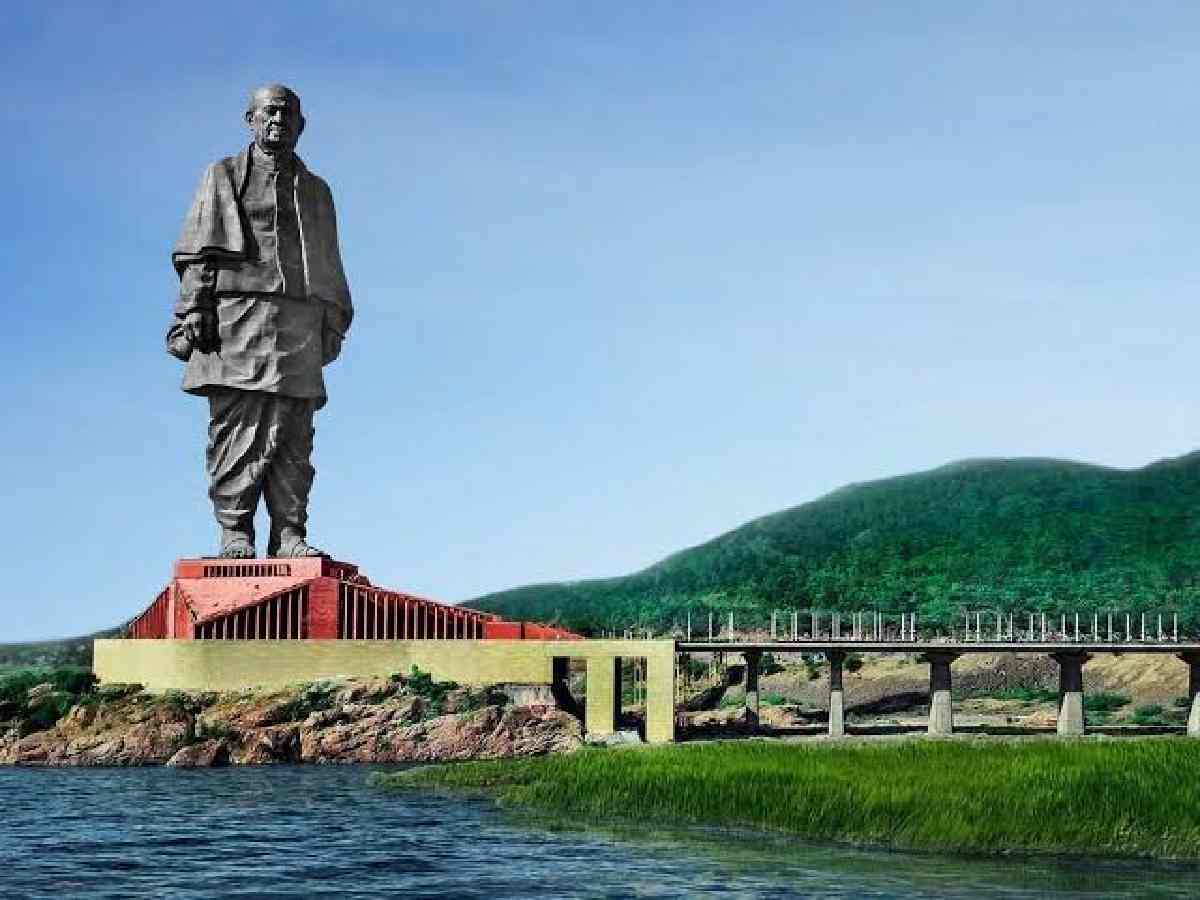Ram Sutar turns 100: On February 22, Ram Sutar completed a hundred years of his extraordinary life—and remarkably, he is still sculpting. Best known for the Statue of Unity, the world’s tallest statue, and the iconic Mahatma Gandhi sculpture in Parliament House, Sutar remains active in his Noida studio even at this milestone age.
For nearly eight decades, his art has shaped India’s public spaces, from towering statues of national leaders to life-like busts installed in Parliament and beyond. As the nation reflects on his century-long contribution, it is clear that Sutar’s legacy is far from complete—his hands continue to breathe life into stone and bronze.
Also read: Why Yamuna is revered in Delhi

Making busts and life-size statues
Over the decades, Sutar has sculpted hundreds of busts and life-size statues, each reflecting a masterful balance of movement and emotion. He is widely regarded as one of the most significant figures in modern Indian sculpture. “A good sculptor should be proficient in using various types of techniques and tools, such as carving and casting,” he explains. “Creativity and imagination are essential—one must be able to generate original ideas.”
His breakthrough came with the statue of Govind Ballabh Pant, installed outside Parliament House. After Pant’s passing in 1961, Sutar was commissioned to create his statue, which received widespread admiration. This success led to further commissions, including statues of Mahatma Gandhi, Maharaja Ranjit Singh, Mahatma Jyotirao Phule, Chhatrapati Shahu Maharaj, Pandit Nehru, Indira Gandhi, Sardar Patel, and Jai Prakash Narayan, many of which adorn Parliament House.
Like every Indian and proud Marathi, Sutar holds Shivaji Maharaj in the highest regard. His 18-foot copper statue of Shivaji, installed in Parliament House, is a striking tribute to the Maratha ruler. For decades, visitors to Parliament have admired the artistry and precision of Ram Sutar’s creations.

No interference in his work
Whether sculpting a full-length statue or a bust, Sutar breathes life into his work, beginning each project with thorough research and dedication. “My father does work on his own terms. He does not like to be bound by deadlines. He shows his best work when no one interferes in his work,” says noted sculptor Anil Sutar, Ram Sutar’s son.
One of Sutar’s most debated works is the statue of Bhagat Singh in Parliament House, where he depicted the revolutionary in a turban. This sparked controversy, as some argued that Bhagat Singh was more commonly seen wearing a hat. “He had constructed the statue installed in the Parliament House on the basis of the statue of Bhagat Singh installed in Hussainiwala,” Sutar explained.
To balance historical accuracy, he depicted Bhagat Singh in a hat for the Delhi Assembly statue.

Which is his best sculpture?
Having sculpted numerous statues of Mahatma Gandhi in India and abroad, Sutar considers the 17-foot Gandhi statue in Parliament House one of his finest works. Unveiled by then-President Shankar Dayal Sharma on October 2, 1993, it embodies Gandhi’s simplicity and philosophy. “Standing near the statue, you really find yourself much better. You get a kind of peace. Sometimes it feels like Bapu will ask you a question. You keep watching it. This is an extraordinary statue.”
Sandeep Dwivedi, a Delhi-based author, echoes this sentiment, “Most of the statues of Ram Sutar look very alive, and a strange energy can be felt in them.”
Another iconic Gandhi statue sculpted by Sutar stands in Patna’s Gandhi Maidan, while yet another—a 1.80-metre bronze figure—graces the parking area of Rajghat, mounted on a two-foot granite pedestal.
Also read: Delhi: A Valentine’s escape to National Rose Garden
Atal Bihari Vajpayee admired Sutar’s work
Sutar’s passion remains undiminished by age. Immersed in his sculptures, he loses track of time, working tirelessly without regard for day or night. “It is said that Atal Bihari Vajpayee was among his ardent admirers.”
Art connoisseurs note that Sutar prefers his monumental sculptures to stand proudly atop rocks or open landscapes, rather than being confined within four walls. Like any great sculptor, he possesses a keen observational eye, essential for capturing the essence of his subjects.
“Sculpture is a complex process. No sculptor should be expected to complete the work under any circumstances within the stipulated time limit. Actually, sculpture is a time-consuming and laborious process.”
He believes that beyond technical proficiency, a sculptor must have a deep understanding of art history and theory. “A good sculptor is one who is technically proficient, creative, imaginative, observant, skilled in problem-solving, patient, and determined.”
Even as he enters his 101st year, Sutar shows no signs of slowing down. His continued presence and unwavering dedication assure us that his legacy will endure—with more majestic, life-like statues to come.
The writer is a Delhi-based senior journalist and author of two books ‘Gandhi’s Delhi: April 12, 1915-January 30, 1948 and Beyond’ and ‘Dilli Ka Pehla Pyar – Connaught Place”





